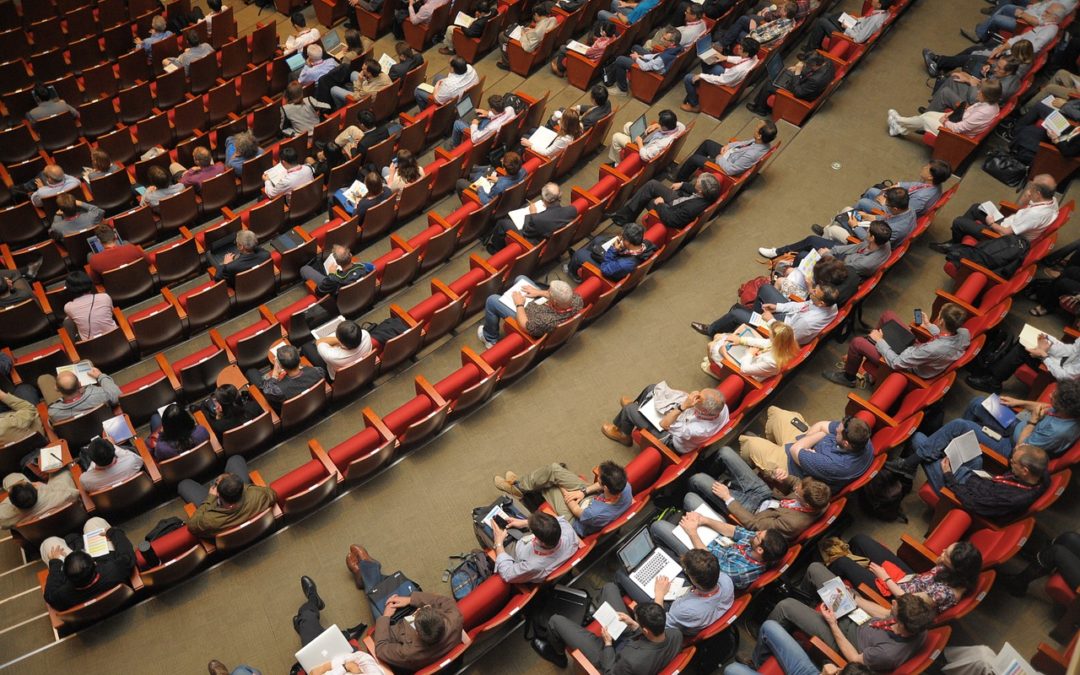Small Changes To These Two Areas Are Easy Ways To Better Engage Your Community
It’s time to change things up when it comes to public meetings if we want them to be effective. Our communities have changed and it’s time the way we hold public meetings changed too. As we discussed in this earlier post, residents aren’t coming to the meetings because they aren’t convenient. Making information more accessible and making meetings better experience for everyone are easy ways to make your community engagement more engaging.
1. Be more accessible.
We’ve got to do a better job at getting the word out, publicizing the meeting purpose, and being more accessible. The purpose of a public meeting is to bring information to the community and that includes more than just having meetings at Town Hall and posting information online.
Community engagement begins with public notice. Good public notice is a crucial element to holding an effective public meeting. Residents can’t come to a meeting if they don’t even know there’s a meeting being held. Resident outreach is critical in having people in the community address issues so that the commissioners can weigh both sides of an argument.
Traditionally, public notice of meetings is only posted on the municipality’s website. In the age of technology, we should be notifying the public in as many was possible, including social media. Notice of public meetings should be posted on the municipality’s website, Facebook, Twitter, and other social media accounts. A recent Pew study showed that in 2015, 72% of adult Internet users used Facebook. That’s 62% of the entire adult population. Of that, 70% of adult users engage with Facebook daily. These are great tools for reaching lots of residents at little to no cost, with the added bonus of attracting younger residents.
Do you have a large non-English speaking population? Public notice should also be available in different languages so that all residents have the opportunity to participate. Similarly, materials should be available at the meeting in a variety of languages to allow everyone an equal opportunity to follow along. Having an interpreter available at meetings is also a great way to make sure you’re including everyone.
When it comes to public meetings they’re almost always held at the same old place at the same old time – Town Hall at 7 p.m. sharp. We’re not taking our residents into consideration when we schedule meetings.
What about residents who have transportation limitations? If you don’t have access to transportation, that means walking to the meetings. If you live close to a Town Hall – no problem. If you don’t, you’re probably not going to make it. Are we offering a bus system or carpool for residents? Are we picking up elderly residents from senior living communities? Are we making accommodations for those who don’t feel comfortable driving at night? Probably not, but we should.
What about residents who can’t make a nighttime meeting? Are we offering alternate times for meetings? Are we really making ourselves available to residents who can’t attend meetings? Do they know we’re available outside of the public meeting to discuss their concerns? Are we offering childcare during meeting times, so that parents with young children are able to attend? Again, probably not.
Town Hall isn’t a convenient location for everyone. If you’re expecting a large crowd or know that an agenda item is of particular interest to residents, then hold the meeting or work sessions in a location that is convenient for everyone.
Bringing information to the community sometimes means meeting with constituents where they are. Maybe this means setting up an information booth at the local mall or farmers’ market. Consider holding local government “office hours” at popular lunch spots around town that will be comfortable for different communities. This is a great way to familiarize residents with information and staff, and give staff and board members a first hand perspective of issues within the community.
2. Make meetings a better experience for everyone.
We also need to make meetings a better experience for our residents. Wherever you decide to hold public meetings make the environment as accommodating to residents as possible. As it is, most public meetings are similar to a courtroom where residents are on trial. A less courtroom-like setting will encourage attendance and allow residents to feel more comfortable speaking up. Consider changing up how the room is set up for the meeting. Perhaps try changing the format of the room so that it’s not setup like a panel of judges. Be sure that you have enough seating for everyone and that you offer different seating options. Elderly or disabled residents may not be able to sit for extended periods on a hard bench. When possible, provide some more comfortable seating options as well as a space for people to stand. Make sure that you have adequate sound systems and room acoustics so that everyone can hear. If you’re displaying maps or other graphics make sure that everyone can see them.
Once residents arrive at a meeting they shouldn’t have to struggle to figure out what’s going on. Water fountains, restrooms, exits, and the meeting room should be clearly marked. The rules for the public comment process should be prominently displayed and copies of the agenda should be readily available.
Most municipalities provide commissioners and board members with the agenda and meeting packets in advance of public meetings. But, it’s not just the board members who should be receiving this kind of information. We need to provide as much material to our residents as possible prior to public meetings. This gives residents time to review the issues being discussed and make meaningful comments. These documents should be available at the public meetings and online. Providing the residents with factual information upfront will help to squash rumors and misinformation. This will then lead to more effective and efficient community engagement.
********************************************************
These are easy changes that will make a big difference in your community. Not every community can do all of this, but every community can do some of this. Ultimately, you know your community best. Make changes that work for your residents. Maybe that means more evening meetings. Or maybe it means offering a transportation shuttle to different parts of the community to help people get to and from the meetings. The best way to find out what’s going to work for your residents is to ask them. But remember if you ask what people want, you’ve got to be willing to listen and keep an open mind.
Please see our disclaimer and let us know if you’d like to discuss how we could help you make your community engagement more engaging.

